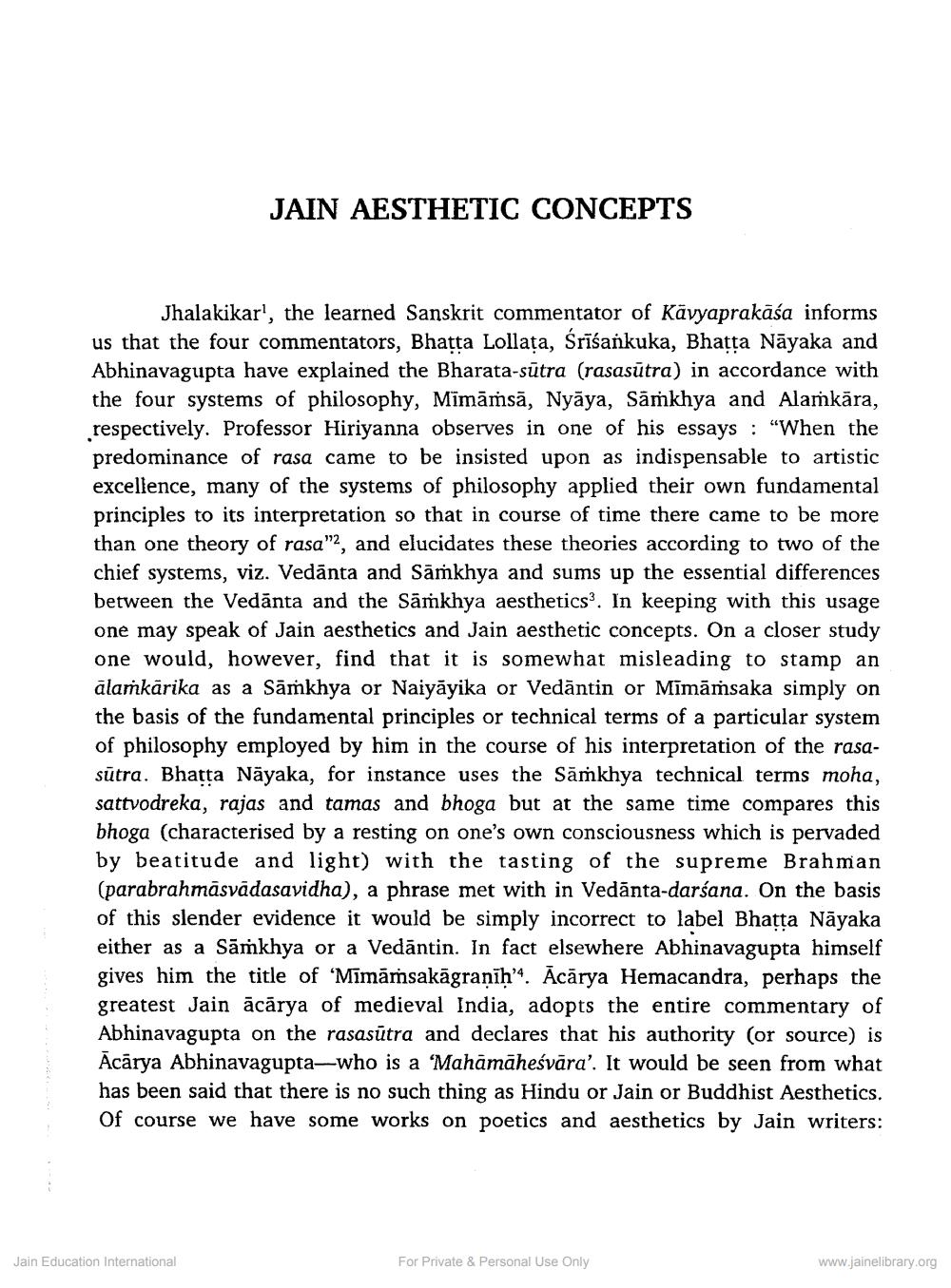________________ JAIN AESTHETIC CONCEPTS Jhalakikar', the learned Sanskrit commentator of Kavyaprakasa informs us that the four commentators, Bhatta Lollata, Srisankuka, Bhatta Nayaka and Abhinavagupta have explained the Bharata-sutra (rasasutra) in accordance with the four systems of philosophy, Mimamsa, Nyaya, Samkhya and Alamkara, respectively. Professor Hiriyanna observes in one of his essays : "When the predominance of rasa came to be insisted upon as indispensable to artistic excellence, many of the systems of philosophy applied their own fundamental principles to its interpretation so that in course of time there came to be more than one theory of rasa", and elucidates these theories according to two of the chief systems, viz. Vedanta and Samkhya and sums up the essential differences between the Vedanta and the Samkhya aesthetics". In keeping with this usage one may speak of Jain aesthetics and Jain aesthetic concepts. On a closer study one would, however, find that it is somewhat misleading to stamp an alamkarika as a Samkhya or Naiyayika or Vedantin or Mimamsaka simply on the basis of the fundamental principles or technical terms of a particular system of philosophy employed by him in the course of his interpretation of the rasasutra. Bhatta Nayaka, for instance uses the Samkhya technical terms moha, sattvodreka, rajas and tamas and bhoga but at the same time compares this bhoga (characterised by a resting on one's own consciousness which is pervaded by beatitude and light) with the tasting of the supreme Brahman (parabrahmasvadasavidha), a phrase met with in Vedanta-darsana. On the basis of this slender evidence it would be simply incorrect to label Bhatta Nayaka either as a Samkhya or a Vedantin. In fact elsewhere Abhinavagupta himself gives him the title of 'Mimamsakagranih4. Acarya Hemacandra, perhaps the greatest Jain acarya of medieval India, adopts the entire commentary of Abhinavagupta on the rasasutra and declares that his authority (or source) is Acarya Abhinavagupta-who is a 'Mahamahesvara'. It would be seen from what has been said that there is no such thing as Hindu or Jain or Buddhist Aesthetics. Of course we have some works on poetics and aesthetics by Jain writers: Jain Education International For Private & Personal Use Only www.jainelibrary.org




